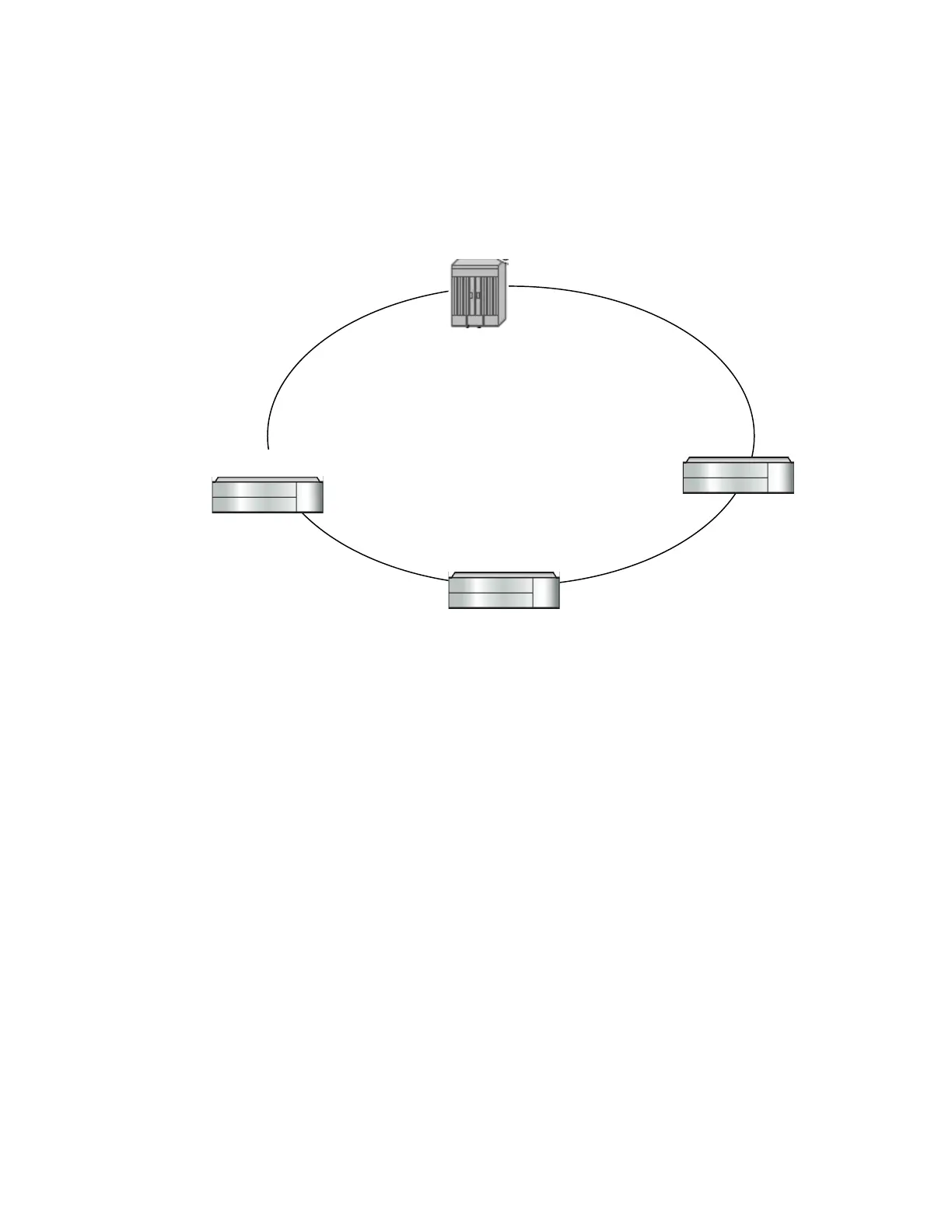Virtual Leased Line Services
7210 SAS M Services Guide Page 187
Configuring Default QinQ SAPs for Transit Traffic in a Ring Scenario
Note: Default QinQ SAPs are supported only on 7210 SAS-M devices configured in access-uplink
mode.
Figure 31: Default QinQ SAP for Transit Traffic in a Ring Scenario
In the Figure 31, 7210-1 is used to deliver some services to customers connected to the device and
additionally it needs to pass through transit from other nodes on the ring (example – traffic from
7210-2 to 7210-3 OR from 7210-2 to 7750 –SR onto the core network).
Without Default QinQ SAPs, user would need to configure a service on 7210-1, with access-
uplink SAPs for each service originating on some other node in the ring. With support for Default
QinQ SAPs, all traffic which does not need to be delivered to any customer service configured on
7210-1 can be switched using the EPIPE service. The example shown below provides the sample
configuration commands in this scenario:
ALA-1>config>service# epipe 8 customer 1 svc-sap-type null-star create
sap 1/1/5:*.* create
statistics
ingress
received-count
exit
exit
exit
sap 1/1/6:*.* create
statistics
ingress
received-count
exit
exit
-
-
21
-
7750 SR

